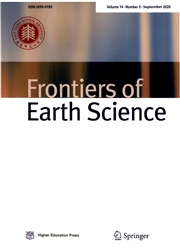Multi-disciplinary approaches to water systems:introduction to the special column
作者:Steven RFASSNACHT,Mingguo MA
摘要:1 Introduction As the human population grows,the livelihoods and well-being of a significant portion of humanity will depend even more on the ability of freshwater ecosystems to provide essential services(Vörösmarty et al.,2010),which will require the maintenance of biodiversity in these freshwater systems(Dudgeon et al.,2006).There are many competing demands on the available water resources,such as potable water,fish and wildlife habitat,agriculture,industrial use,and recreation,that are driven by different sectors;even within a specific sector there can be diverging interests.For example,water management of the Upper Arkansas River in Colorado has been mandated by the 1949 Arkansas River Compact between the US states of Colorado and Kansas which has led to stream-aquifer issues(Taylor and Luckey,1974),water transfers from agriculture to urban(Howe et al.,1990),and competing recreational uses(Wollmuth et al.,1985;Arkansas Basin Roundtable,2017).The recent Upper Arkansas Voluntary Flow Management Program tries to balance many users,including recreation by kayakers and rafters who want to maintain streamflow(at the Wellsville gauge)at or greater than 20 m3/s as well as anglers who want lower flows in the range of 7 to 11 m3/s to maintain fish habitat(Arkansas Basin Roundtable,2017).
发文机构:ESS-Watershed Science Cooperative Institute for Research in the Atmosphere Natural Resources Ecology Laboratory Research Base of Karst Eco-environments at Nanchuan in Chongqing
关键词:UPPERHABITATMAINTAIN
分类号: P59[天文地球—地球化学]
- Spatiotemporal influences of land use/cover changes on the heat island effect in rapid urbanization area
- A simplified index to assess the combined impact of tropical cyclone precipitation and wind on China
- Land use and land cover classification using Chinese GF-2 multispectral data in a region of the North China Plain
- Erosion-deposition patterns and depo-center movements in branching channels at the near-estuary reach of the Yangtze River
- Metal accumulation in Asiatic clam from the Lower Min River (China) and implications for human health
- Estimation of copper concentration of rocks using hyperspectral technology
- Chemical and minero-petrographical changes on granulite rocks affected by weathering processes
- BMA probability quantitative precipitation forecasting of land-falling typhoons in south-east China
- Accumulation of unconventional petroleum resources and their coexistence characteristics in Chang7 shale formations of Ordos Basin in central China
- Improvement of typhoon rainfall prediction based on optimization of the Kain-Fritsch convection parameterization scheme using a micro-genetic algorithm


